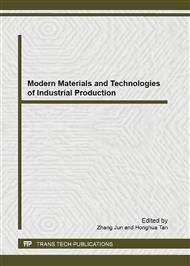p.223
p.228
p.234
p.240
p.244
p.249
p.254
p.261
p.266
Durability Analysis Testing on Reactive Powder Concrete
Abstract:
Reactive powder concrete (RPC) has been proposed as barrier materials for the construction of engineered barrier in Taiwan. The durability characteristics of RPC in such applications become paramount for the success of the containment of the wastes. The adverse environmental conditions at the disposal site could attack concrete barrier and results in degradation of the material.Laboratory tests will be conducted on RPC with various compositions to investigate the durability test of RPC. These include chloride ion ingress, and sulfate attack of RPC. In this study, the resistance of concrete to sulfate attack was tested by submerging RPC specimens in Na2SO4 solution. Based on the volume change data for a period of1 year, the RPC with higher water to binder ratio (W/B) exhibited lower resistance to sulfate attack. The electrochemical technique is applied to accelerate chloride-ion migration test for RPC. The RPCs chloride migration coefficient is significantly decreased by the use of pozzolanic material, compared with ordinary concrete.
Info:
Periodical:
Pages:
244-248
Citation:
Online since:
September 2013
Authors:
Keywords:
Price:
Сopyright:
© 2013 Trans Tech Publications Ltd. All Rights Reserved
Share:
Citation:


